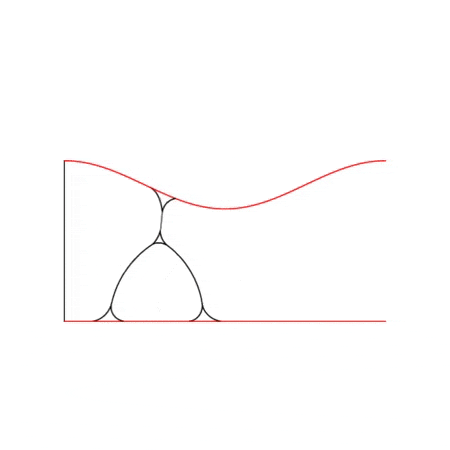Modelling foam flows
Dr Denny Vitasari, Prof. Simon Cox
Project status: ongoing
Aqueous foam consists of air bubbles separated by thin liquid films. Foam has wide industrial applications, ranging from flotation in the mining industry, oil recovery, and foam fractionation, as well as consumer products. Among those applications, aqueous foams flowing through microfluidic channels have received attention during the last decade, supported by advancing technologies in the field. Applications of liquid foams in microfluidic channels include medical, pharmaceutical, and biological fields as well as oil recovery and soil remediation. A recent technological use of foam is as a displacement fluid, for example in improved oil recovery and varicose vein removal. Despite the diverse nature of these applications, they are based on the same principle: pushing a foam into a liquid-filled region, whether that is a porous rock formation containing pockets of oil, or a swollen vein in which blood has collected, displaces the liquid smoothly and without mixing. The effective displacement occurs while stresses remain below the yield stress of the foam, the critical point that separates solid-like behaviour from unrestrained flow, so that it is sufficiently stiff to retain a plug-like flow in the channel. Therefore, in each application it is important to choose the appropriate material properties – surface tension, bubble size and liquid content – to set a yield stress appropriate to the foam flow rate. We develop a model via the extension of a "viscous froth" model to simulate the dynamics of a wet foam in a Hele-Shaw cell, consists of two flat walls, confining a layer of bubbles within, resembling two-dimensional foam. The two-dimensional model includes the friction experienced by the soap films as they are dragged along the cell walls, while retaining accurate geometrical information. To explore the consequences of changing the liquid content, bubble size and channel geometry, we consider a simple foam geometry known as a bubble lens: a bubble partially filling a narrow, constricted channel with a single film spanning the gap between the bubble and the opposite wall. The triple vertices of this structure are decorated with Plateau borders whose area determines the liquid fraction of the foam. It was found that the higher liquid content, the larger bubble and the larger constriction size gives lower critical velocity where the structure remains stable.
 |
| Figure 1: Dynamics of "lens" structure flowing through a narrow constricted channel |
Another model is also developed by adding a repulsive force to the "viscous froth" to explore the change of orientation and bubble pinch off when a foam passes through a constriction with a particular geometry. The results of the simulation are verified using the experimental data obtained by the collaborators at University of Birmingham.
 |
| Figure 2: Bubble reorientation in a narrow constricted channel |
